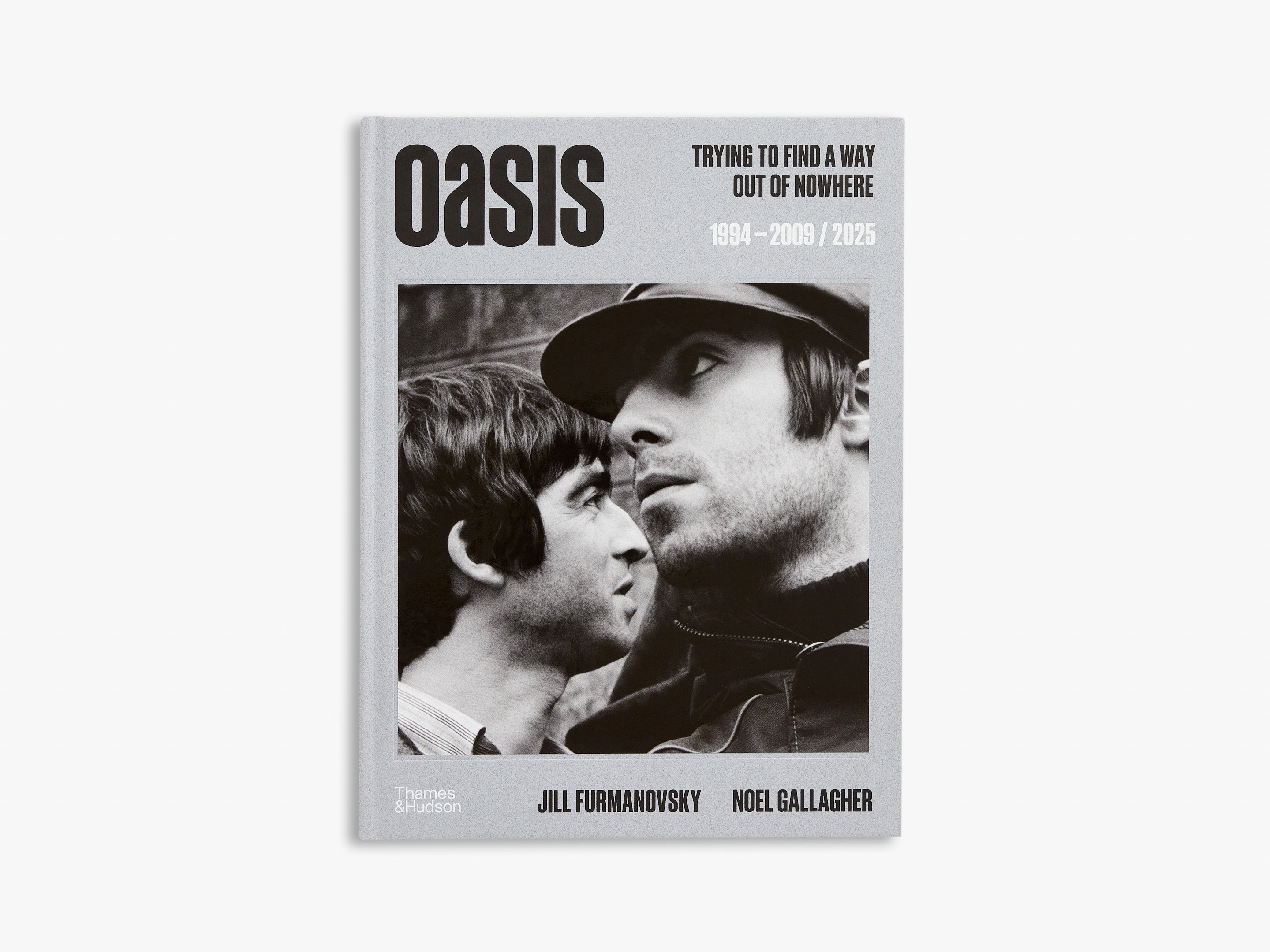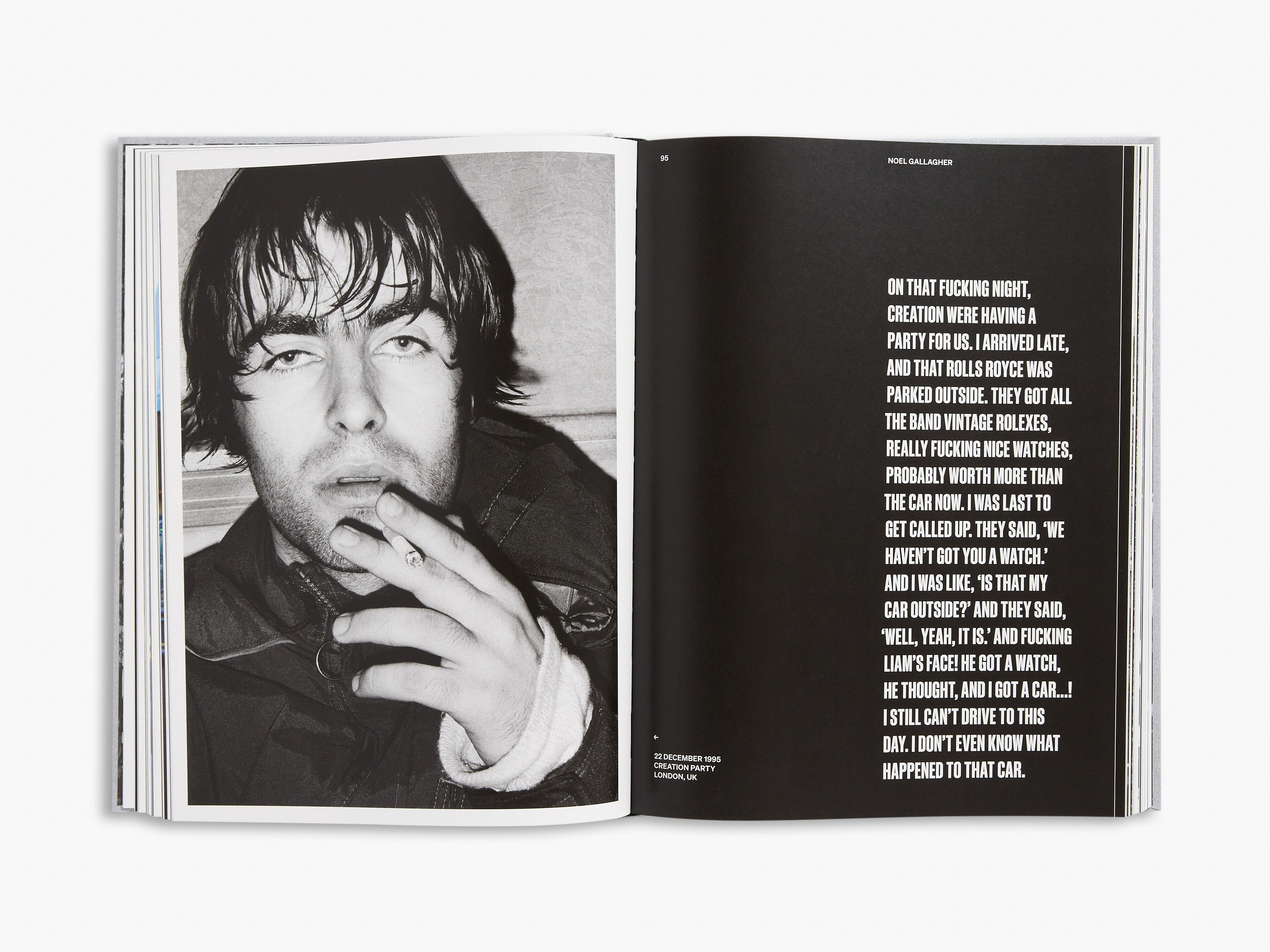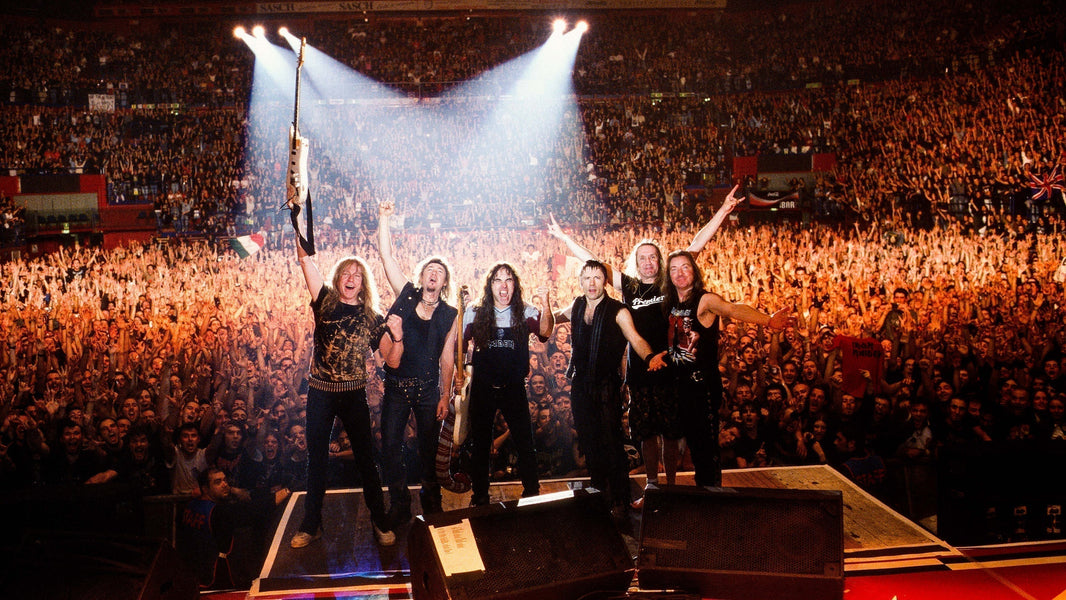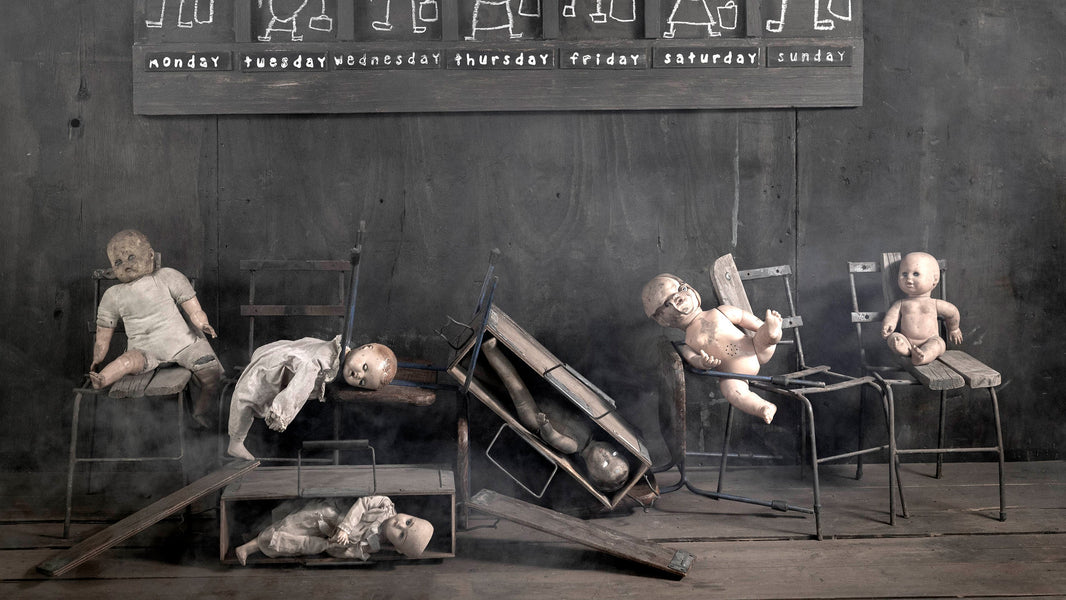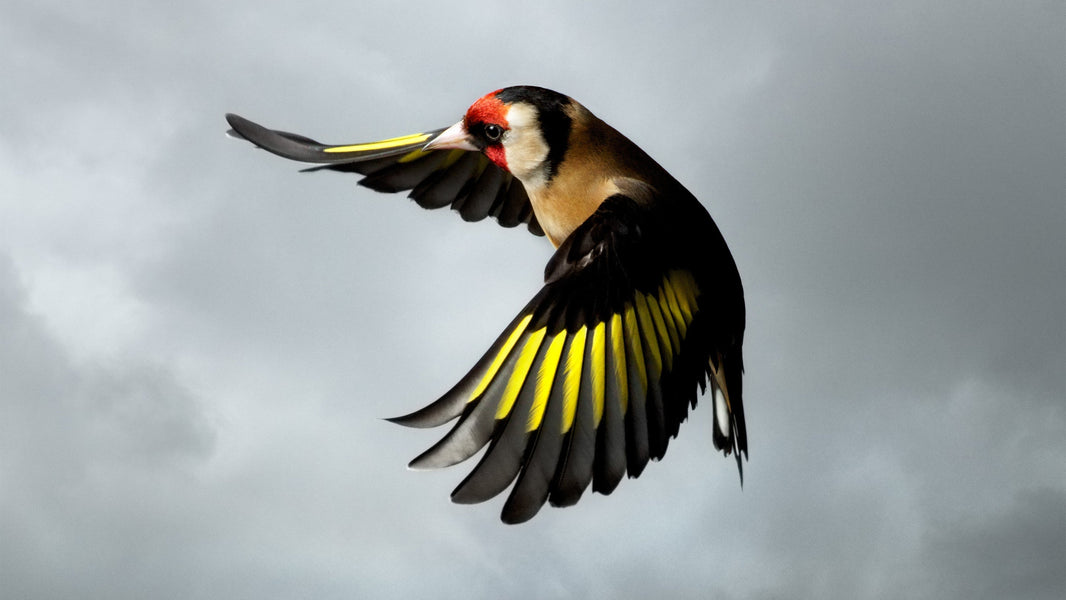By the time Jill Furmanovsky met and photographed Oasis in December 1994, she was already a respected name in music photography. Since the mid-70s, she had been capturing iconic artists like Paul McCartney, Duke Ellington, The Cure, Pink Floyd and Blondie. She was working on a book of her photography when someone approached her about an up-and-coming band from Manchester. That introduction to Oasis was a defining moment in her career – and the start of a lasting creative partnership.
With rare behind-the-scenes access, Jill documented the band in a way few others could. Her photos captured their raw energy, sharp wit and moments of unexpected vulnerability, creating an intimate visual record of the band’s stellar trajectory.
Now, many of those images are brought together in Oasis: Trying to Find a Way Out of Nowhere. Edited by Noel Gallagher, it tells the story of the band’s triumphant rise through more than 500 of Jill’s powerful photographs.
We caught up with Jill at her North London studio to talk about the book and her years with Oasis.
© Jill Furmanovsky. 2 May 1997, King’s Cross, London, UK
One of the first photos you ever took was of Paul McCartney, when you were a schoolgirl. Were you interested in photography from a young age? What was it that captivated you?
Jill Furmanovsky: My father was a talented amateur photographer and had a darkroom at home. I used to sit on a high stool, watching him print. He would expose a blank sheet of paper and then put it into a dish of liquid. I would say 'Abracadabra' and a picture would come up like magic. So it was seeing white sheets of paper turned into beautiful pictures and things.
By the time you started working with Oasis in the 90s, you’d been a chronicler of the music scene for at least two decades. Was there something about music photography in particular that you enjoyed?
Jill Furmanovsky: Taking photographs was and still is my first passion, but a close second was my love of music and the musicians, starting with The Beatles of course.
My parents came [to the UK] when I was 11, dragging me from kind of a rural life with grandparents to London, which was scary. The compensation was The Beatles – we arrived in 1965, bang on that moment of Cultural Revolution. So, although school was a bit dull, I could go and stand outside Abbey Road, where I’d try to get some autographs. I was captivated by the Beatles – I was a member of their fan club.
And then I actually wrote to Abbey Road and said, ‘Could I come and maybe pop into Abbey Road for my school magazine?’ I was already priming myself for something maybe that to do with that. I was lucky enough to get a break at the age of 18 when I became the photographer for a venue called The Rainbow Theatre and I never looked back.
What was it like in those moments when you were documenting a performance or shooting with a band?
Jill Furmanovsky: Live photography is like a meditation and is still one of my favourite activities. The musicians do their thing and I do mine. Shooting documentary is similar but with some interactions. Studio sessions for PR are more about ‘chat’, and the photographer needs to be a kind of entertainer as well as art-director. I learnt to do at least a bit of that in the 80s when I started working for The Face magazine, but it’s not something I did a lot with Oasis. They didn’t like posing.
© Jill Furmanovsky. 4 December Corn Exchange Cambridge, UK
What was your first meeting with Oasis like?
Jill Furmanovsky: It was very low key. I was briefly introduced to Noel on a stairwell. He thought I was a caterer! Then I shot the gig and he realised I was a photographer. Afterwards, as I remember it, I showed him and Bonehead an early copy of my book The Moment, which began with The Beatles and, I told them, would end with Oasis, who were very much the new band of the moment. They were pleased with that, and our long relationship began.
At that first Cambridge Corn Exchange gig in 1994, I was puzzled by the dynamics of what was happening. The atmosphere in the place was electric: hordes of very hip-looking teenagers stretching around the block and going absolutely wild, and then nothing happening on the stage at all. Guigsy and Bonehead and Tony Carroll were more or less stationary – they just played and looked to Noel. Noel simply smiled and did his guitar solos, and Liam stood with his hands behind his back singing. But when he wasn't singing, he’d go and sit on the drum riser or walk off. So you had very little action going on, very little to shoot as a photographer. No leaping in the air, no going back with your head. Just everybody in their space.
But the audience was going absolutely berserk. And this is in the early days. That hasn't changed, actually. It's still there. When I was [at the 2025 reunion], I thought: it’s the same thing. It was all about the audience, really. I think that’s what’s taking everybody by surprise – how hungry people are for that very simple approach of fantastic music played very, very well, and songs that everybody can relate to and that have crossed generations. As Noel says, it’s how the music makes you feel.
You’ve said that your time with Oasis produced some of your best work as a photographer. You also worked with them for over a decade. What was it like to document their progression during that time?
Jill Furmanovsky: My work with Oasis is definitely my best body of work. I’ve worked with them and Noel Gallagher for 30 years now – eek! It has been a joy. I love each of the musicians and their music resonates with me. Working with them was also hugely entertaining. They made me laugh so much and they allowed closeness.
By the time I started working with Oasis I was 40, the perfect age to work with them because they liked working with older women. I was closer to their mothers’ age than theirs. I mean, I'd worked with a lot of bands that started humbly and then got very big and I saw them all the way through - bands like The Police, for example. I'd already watched them play to three men and a dog in a pub and then, you know: stadiums!
So, I was used to that sort of thing, and I felt that I could offer a photojournalist’s eye. That was quite important because the one thing they didn't have patience for was standing around posing. So you needed somebody who was going to be a fly on the wall, and I was quite good at that.
And I just loved them. They were hilarious. They were great fun. They were good company. They were beautiful to photograph, those Gallagher brothers. And I liked the DNA of the whole band.
© Jill Furmanovsky. 31 January-2 February 1995, San Francisco, California, USA
Do you have any favourite stories about your time with the band? Or any favourite images from the book?
Jill Furmanovsky: All my stories are visual. Check out the images from Schiphol Airport or the shoot for Be Here Now in the King’s Cross Pool and Snooker club and you will see the stories.
This image in San Francisco [above] is a favourite band shot of mine. I just love this picture. I think it's the second [US tour]. Well, hardly a tour – it was more like a visit. They did play the Fillmore West on this leg, and they were doing a night on the bus and then a night in a hotel. And this is them looking a bit dishevelled and tired and having to do a shoot with me. But they did it. There’s just kind of this slightly – what’s the word for it? – not arrogant, but this sort of this disrespectful vibe that's got punk written all over it. Noel used to say that was one of the reasons why they hadn't done well in the States initially. It was because they didn't go the full mile as far as being cooperative is concerned... They didn't like doing long photoshoots and that sort of thing.
You have years of archival images that have never been seen before. What was it like to revisit some of these memorable and quieter moments of your time with the band?
Jill Furmanovsky: Well, my assistant made contact sheets of everything and it was only then that we realised we would be merely scratching the surface of this huge archive. Some wonderful surprises are still in there. I love the images from the Live Forever video shoot in Portland Place when Liam and Noel had their hair cut and the band were wearing Beatle suits. Also the out-takes from the Wonderwall video – I hadn’t really looked at those before. But there is lots more to come. There was just so much material. And there was such rich material.
© Jill Furmanovsky. 25 November 1997, Schiphol Airport Amsterdam, Netherlands
Noel Gallagher says in his foreword that the [above] candid shot you took at Schiphol Airport in Amsterdam is one of his favourites. What do you remember about that day?
Jill Furmanovsky: That shot was a typical, ‘oh look the band are all in one place and hanging around. Let’s do a shoot!’ moment. I love the hat (given to Noel on an Australian tour) and I love the closeness of the Gallaghers and especially I love Bonehead with his feet in the air on the baggage carousel. It’s a punk moment and there was a lot of punk in Oasis.
What are you most excited for fans to see in the book?
Jill Furmanovsky: I hope the fans will feel the intimacy between me and this extraordinary band. That is what I wanted to see when I was a Beatles fan.
Oasis: Trying to Find a Way Out of Nowhere is available now.











